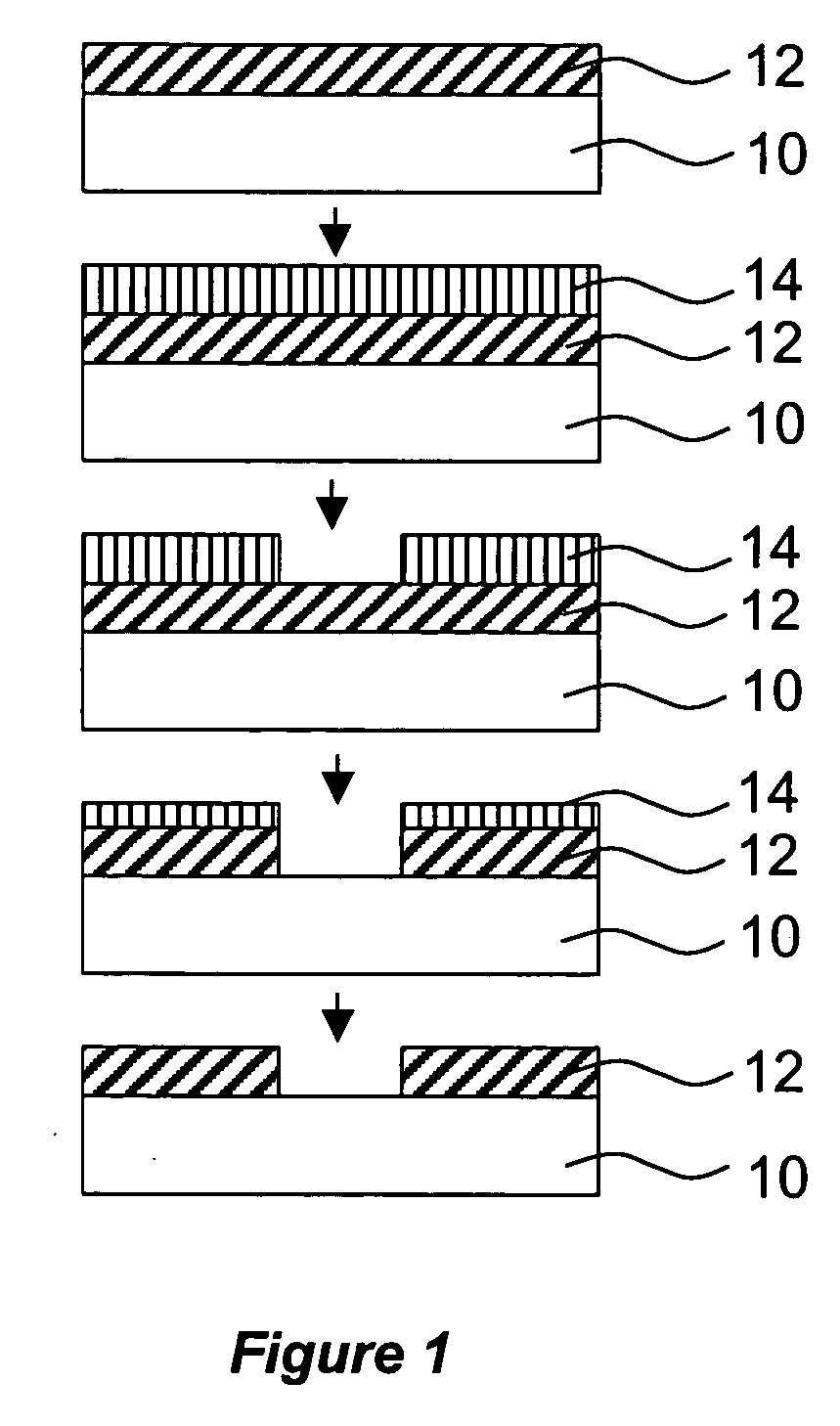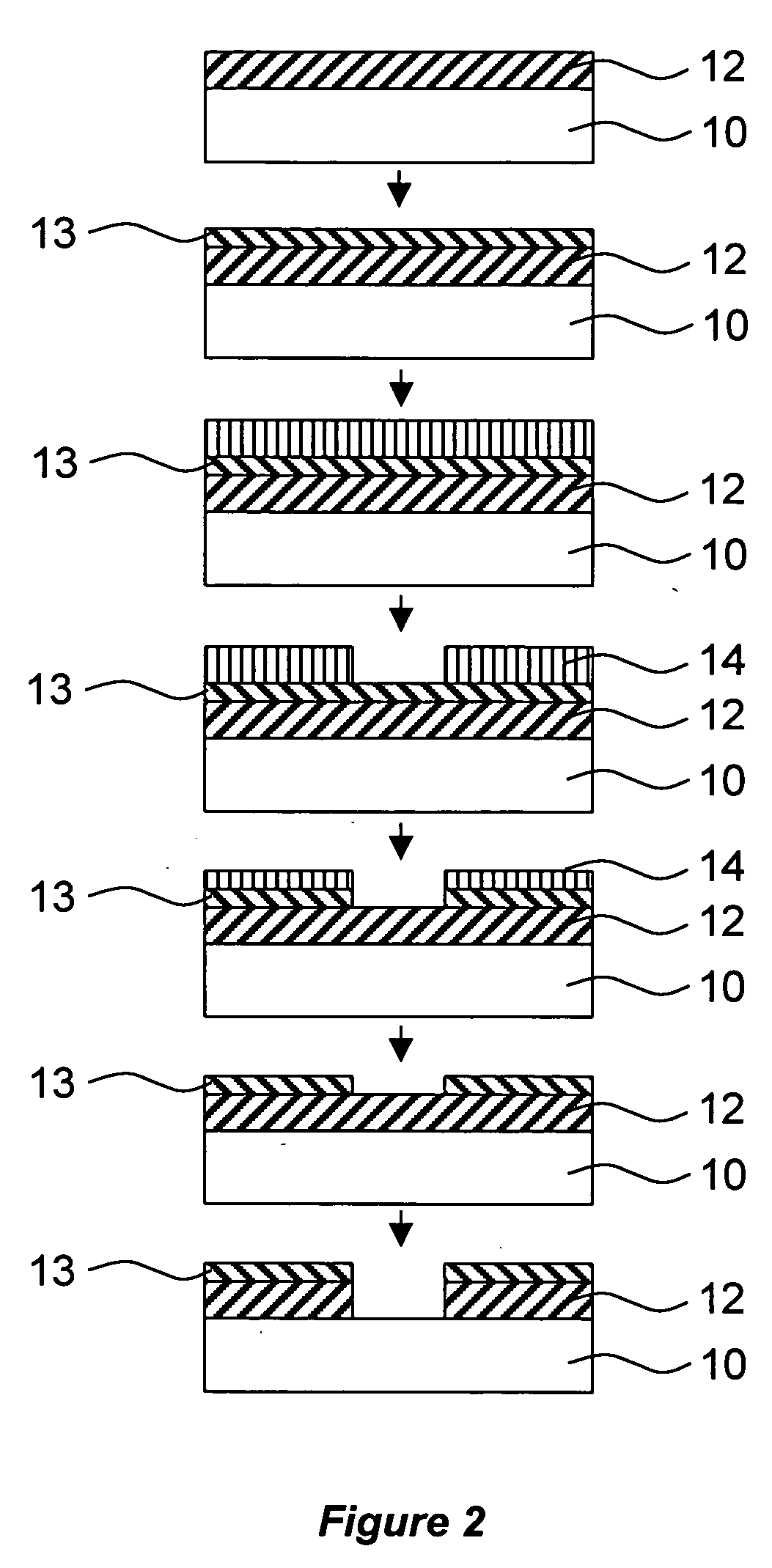Dielectric materials and methods for integrated circuit applications
a technology of integrated circuits and materials, applied in the direction of material analysis, instruments, and semiconductor/solid-state device details, can solve the problems of reliability failure, increased softness, and increased softness, and achieve the effect of reducing the number of processing steps, reducing the sensitivity of fhosm, and reducing costs
- Summary
- Abstract
- Description
- Claims
- Application Information
AI Technical Summary
Benefits of technology
Problems solved by technology
Method used
Image
Examples
example vi
COMPOUND EXAMPLE VI
In another compound example, a compound is provided of the general formula: R1R2MXOR3, where R1 is any partially or fully fluorinated organic group (preferably a partially or fully fluorinated aryl, alkenyl, alkynyl or alkyl group) as set forth above with respect to R1, R2 is any partially or fully fluorinated organic group (preferably a partially or fully fluorinated aryl, alkenyl, alkynyl or alkyl group) as set forth above with respect to R1, or any such organic groups nonfluorinated, and where R1 and R2 are the same or different from each other, where M is an element selected from group 14 of the periodic table as mentioned above, where OR3 is an alkoxy group as above, and where X is a halogen. R1 and R2 can be the same or different from each other. Specific examples within this category include:
example vii
COMPOUND EXAMPLE VII
In a further compound example, a compound is provided of the general formula: R1 R2MX2, where R1 is any partially or fully fluorinated organic group (preferably a partially or fully fluorinated aryl, alkenyl, alkynyl or alkyl group) as set forth above with respect to R1, R2 is any partially or fully fluorinated organic group (preferably a partially or fully fluorinated aryl, alkenyl, alkynyl or alkyl group) as set forth above with respect to R1, or any such organic groups nonfluorinated, and where R1 and R2 are the same or different from each other, where M is an element selected from group 14 of the periodic table as mentioned above, and where X is a halogen as above—Except where M is Si, R1 and R2 are perfluorinated phenyl, and X is Cl, which, though not novel per se, is novel when used as part of the methods for making the materials of the invention as will be discussed further below. Specific examples within this category include:
As Compounds V-VII have t...
example 1
Making a Compound I via Method B
CF2═CF—Cl+sec / tert-BuLi→CF2═CF—Li+BuCl
CF2═CF—Li+Si(OEt)4→CF2═CF—Si(OEt)3+EtOLi
200 ml of freshly distilled dry Et2O is added to a 500 ml vessel (under an argon atmosphere). The vessel is cooled down to −80° C. and 15 g (0.129 mol) of CF2═CFCl gas is bubbled to Et2O. 100 ml (0.13 mol) of sec-BuLi is added dropwise during three hours. The temperature of the solution is kept below −60° C. all the time. The solution is stirred for 15 minutes and 29 ml (27.08 g, 0.130 mol) of Si(OEt)4 is added in small portions. The solution is stirred for over night allowing it to warm up to room temperature. Formed red solution is filtered and evaporated to dryness to result crude trifluorovinyltriethoxysilane, CF2═CFSi(OEt)3.
PUM
| Property | Measurement | Unit |
|---|---|---|
| density | aaaaa | aaaaa |
| temperature | aaaaa | aaaaa |
| dielectric constant | aaaaa | aaaaa |
Abstract
Description
Claims
Application Information
 Login to View More
Login to View More - R&D
- Intellectual Property
- Life Sciences
- Materials
- Tech Scout
- Unparalleled Data Quality
- Higher Quality Content
- 60% Fewer Hallucinations
Browse by: Latest US Patents, China's latest patents, Technical Efficacy Thesaurus, Application Domain, Technology Topic, Popular Technical Reports.
© 2025 PatSnap. All rights reserved.Legal|Privacy policy|Modern Slavery Act Transparency Statement|Sitemap|About US| Contact US: help@patsnap.com



